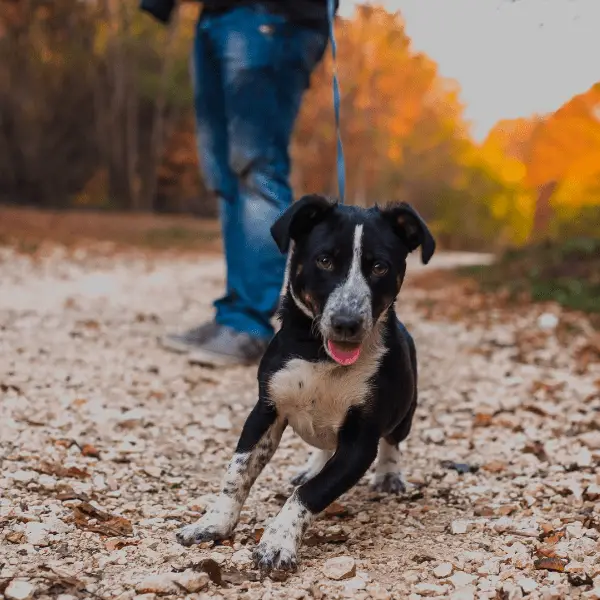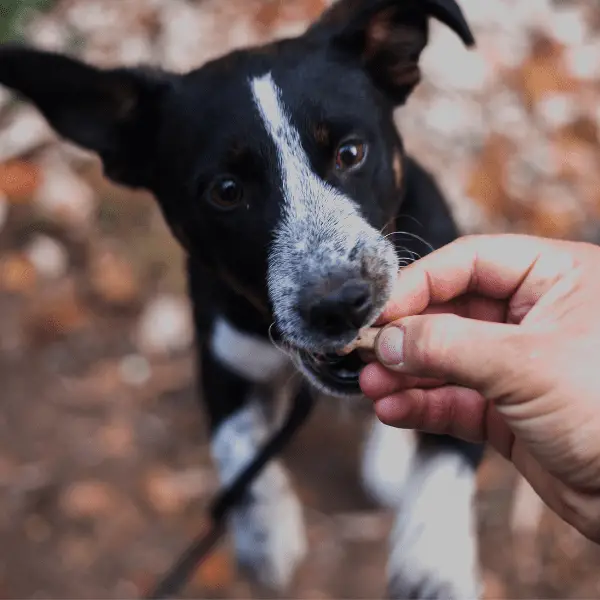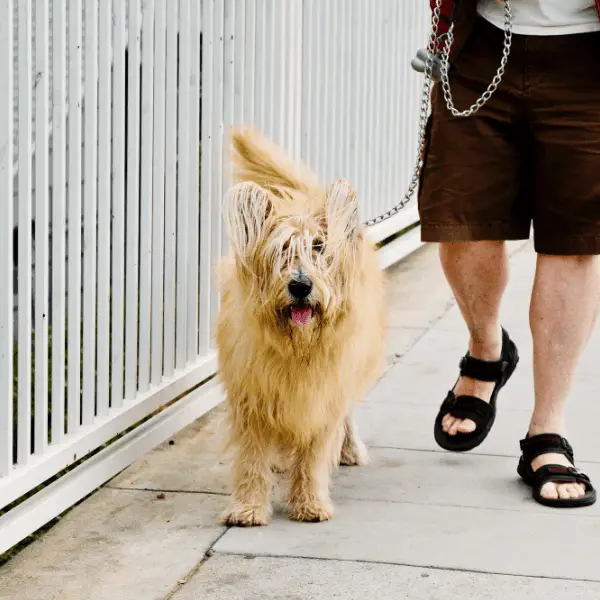Firstly all dogs are different, and some are more excitable than others; some are hyper, some are nervous. Whichever your dog is, let’s stop them from pulling on the lead. We will use a few different techniques to stop a dog from pulling on the leash. If one fails, move to the next one. Remember, a dog is not born knowing how to walk on a lead; they need training from their owners to show them exactly how. Did you know that a dog’s natural walking pace is twice as fast as us humans? So they need all the encouragement and training to learn to walk at our speed.
Dogs don’t know any different, and they quickly learn only to walk forward. Dogs think the quicker they walk, the further they will get. You typically tend to find that in the first few minutes of a new walking experience is much more intense with their pulling; this is pure excitement after not being outside for so long, and there are all these new smells that dogs are overexcited about sniffing! Some can’t contain themselves as it’s understandable. With the appropriate training, your dog will be able to walk without pulling on the lead.
Before you go on a dog walk
Before you go on a walk, try not to get them all excited by shouting Walkieeees at the top of your voice, this will only encourage them to be even more excited whilst out walking, resulting in more of a struggle outside. Quietly grab the lead poop bags, put your shoes on and calmly walk them out of the house. You’re then not starting on the back foot with a hyped-up dog. You could also try letting them burn off a little steam in the garden before your walk.

Choose the correct lead.
When I had dogs when I was younger, it was a collar and lead. It’s only recently that hardnesses have become the more common choice than a collar. I prefer a harness because a collar pulls around a dog’s neck, making them cough, wheeze, and sometimes even be sick along the way.
There are several other different types of collars:
- Harness – My prefered choice, excellent support, doesn’t choke.
- Choker Collar – For bigger dogs, the name says it all. Not suitable for smalls dogs or dogs with long thin necks like a whippet or a ground hound.
- Collar – Standard collar can also cause slight choking and gasping.
- Headcollar – When they pull the lead pushes their head down, not our prefered choice.
- Slip Leads – Like a choker, it will continue to choke the more they pull. Can be dangerous!
For most dogs, you do not need the collars that offer self choking, and if you follow the technique below, you shouldn’t need ever use a choke collar. However, we understand that some dogs are a lot bigger and need to be safely controlled; only then you should look at other options. Several local dog professionals are always on hand to help you with one-on-one sessions.
What we learnt so far
So, we know why dogs pull on the lead, we also know not to get them excited before a walk, and we have chosen the correct dog lead/collar.
Now let’s do this.
How to stop your dog pulling on the lead
Stop and start technique.
When you feel the lead tighten, you should stop walking with your dog straight away, keep quiet and remain calm. Repeat this as many times as you need to. Calmly stop each time for a few seconds. When they stop, and the lead is slack, only then you can carry on walking. By completing the stop and start technique, your dog will understand that they don’t go anywhere if they pull on the lead.
Do not ever pull them back or jerk on the dog lead. Calmly stop each time. You may not have made it out of the path yet, and you have already stopped twice. This is fine! It would be best if you were consistent. The quicker you resolve it now, the quicker you and your dog can have plenty of enjoyable walks together.
Stop, start and reverse technique
This technique is the same as the stop and start approach but includes a reverse direction. You include this when you have stopped, but your dog hasn’t stopped and is still pulling on the lead. You reverse and turn around, start walking in the opposite direction. This then triggers their brains when they walk in a different direction. This will snap them out of focusing on only going forward. Then carry on walking and repeating the Stop and Start Technique whilst including the reverse direction if and when needed.
Get in the zone
When you are lead training your dog, you have to have the mindset that your leash training and not going on a dog walk, be ready to have your patients tested and be consistent.

Rewarding your dog
Using treats whilst lead training is essential; they can help change your dog’s behaviour for the best. Dog treats are the perfect incentive. They are also helpful for distracting your dog away from things that can cause inappropriate behaviours. Make sure you don’t run out before the end of the training session, as this wouldn’t be consistent. The aim is; eventually, you will cut the treats down or phase them out completely. Reward your dog when you feel fit and mostly when loose lead continuous walking is in process.
Best dog lead training environment.
Practise in a quiet and safe area, away from the roads with no distractions. These techniques can’t be completed effectively on a busy high street or near a busy motorway. You need to find an open place or a field; that would be perfect.

Summary
With patients and constancy, you will have no problems training your dog to walk on the lead nicely. We hope that the techniques will help you have many enjoyable walks together ahead of you.
Another good training that you should cover with your dog is the heal command. Find it here; it’s our very own simple training guide. It’s also useful on dog walks.
